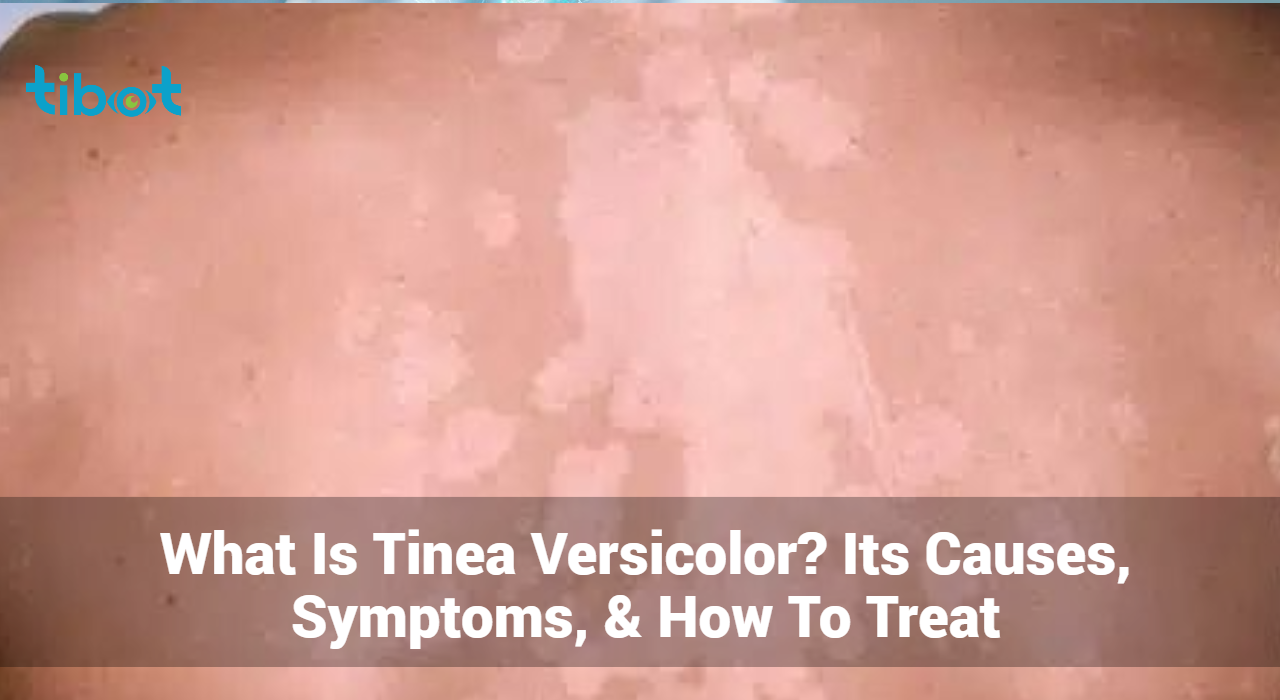What Is Tinea Versicolor? Its Causes, Symptoms, & How To Treat

Tinea Versicolor is a common skin condition characterized by patches of skin that are lighter or darker than the surrounding areas. This condition, also known as pityriasis versicolor, is caused by an overgrowth of a type of yeast that is normally present on the skin. Although it is not harmful and generally does not pose serious health risks, it can be cosmetically concerning for those affected. This comprehensive guide delves into the causes, symptoms, and treatment options for tinea versicolor, providing valuable insights for managing and addressing this condition.
What Is Tinea Versicolor?
Tinea Versicolor is a skin condition that results from an imbalance in the normal fungal flora of the skin. It leads to the development of discolored patches on the skin, which can vary in color from lighter to darker than the surrounding skin. These patches are usually found on the trunk, back, shoulders, and arms but can appear anywhere on the body.
What Causes of Tinea Versicolor?
- Fungal Overgrowth: The primary cause of tinea versicolor is the overgrowth of Malassezia yeast, a type of fungus that is naturally found on the skin’s surface. Under certain conditions, this yeast can proliferate, leading to the skin discoloration associated with the condition.
- Environmental Factors: Factors such as hot and humid weather, excessive sweating, and oily skin can contribute to the overgrowth of Malassezia yeast. The condition is more common in warm climates where these factors are prevalent.
- Genetic Predisposition: While tinea versicolor is not directly inherited, there may be a genetic tendency for some individuals to develop the condition, especially if they have a family history of fungal skin infections.
- Immune System Factors: Individuals with compromised immune systems or those who are immunosuppressed may be more susceptible to tinea versicolor.
- Hormonal Changes: Hormonal fluctuations, such as those occurring during pregnancy or puberty, can influence the development of tinea versicolor.
- Discolored Patches: The most characteristic symptom of tinea versicolor is the appearance of discolored patches on the skin. These patches can be lighter or darker than the surrounding skin and may vary in size and shape.
- Location: Patches are most commonly found on the trunk, back, shoulders, and upper arms. However, they can also appear on the neck, chest, and legs.
- Texture: The affected skin may appear slightly scaly or dry, but the patches are usually not raised or inflamed.
- Itching: While itching is not always present, some individuals with tinea versicolor may experience mild itching or irritation in the affected areas.
- Sun Exposure: The discoloration of the patches can become more noticeable after sun exposure, as the affected skin may not tan as evenly as the surrounding skin.
Diagnosis of Tinea Versicolor
Diagnosing tinea versicolor typically involves a combination of clinical examination and laboratory tests:
- Clinical Examination: A healthcare provider will examine the skin and assess the characteristic appearance and distribution of the patches. Tinea versicolor often has a distinctive look that can aid in diagnosis.
- Wood’s Lamp Examination: A Wood lamp (a special ultraviolet light) may be used to inspect the skin. Under this light, tinea versicolor patches may fluoresce with a yellow or greenish hue.
- Skin Scraping: In some cases, a skin scraping may be taken to examine under a microscope for the presence of Malassezia yeast, confirming the diagnosis.
- Skin Biopsy: Although not commonly required, a skin biopsy may be performed to rule out other conditions if the diagnosis is uncertain.
Analyze Skin Diseases
Use our AI chatbot to determine your skin condition
What Are The Treatment Options for Tinea Versicolor?
- Topical Antifungal Treatments
- Purpose: Topical antifungal treatments are the first-line treatment for tinea versicolor. They work by reducing the fungal overgrowth on the skin.
- Examples: Common topical antifungals include ketoconazole cream, clotrimazole cream, and miconazole cream. These should be applied to the affected areas as directed by a healthcare provider.
- Oral Antifungal Medications
- Purpose: For more severe or widespread cases, oral antifungal medications may be prescribed.
- Examples: Medications such as itraconazole, fluconazole, and terbinafine are effective in treating tinea versicolor. These are typically used for a short duration under medical supervision.
- Topical Selenium Sulfide
- Purpose: Selenium sulfide is an antifungal agent that can help reduce the yeast population on the skin.
- Application: It is commonly used in the form of shampoo or lotion, which should be applied to the affected areas and left on for a specific period before rinsing.
- Topical Ketoconazole Shampoo
- Purpose: Ketoconazole shampoo can help manage tinea versicolor by reducing the fungal load on the skin.
- Application: The shampoo should be applied to the affected areas and left on for about 5 to 10 minutes before rinsing, typically used twice a week.
- Self-Care and Lifestyle Adjustments
- Avoiding Excessive Heat and Humidity: Reducing exposure to hot and humid environments can help minimize fungal growth.
- Maintaining Good Hygiene: Regular bathing and wearing breathable clothing can help manage the condition.
- Using Non-Oily Skin Products: Opt for non-comedogenic and oil-free skin care products to avoid exacerbating the condition.
- Sun Protection
- Purpose: Protecting the skin from excessive sun exposure can help prevent further discoloration and promote a more even skin tone.
- How-To: Use a broad-spectrum sunscreen with SPF 30 or higher, and wear protective clothing when outdoors.
How Can Prevent of Tinea Versicolor?
- Maintain Good Hygiene: Regular cleansing of the skin helps remove excess oil and sweat that can contribute to fungal overgrowth.
- Avoid Prolonged Sun Exposure: Excessive sun exposure can exacerbate discoloration. Use sunscreen and protective clothing to shield the skin.
- Manage Sweat: If you are prone to excessive sweating, consider using antiperspirants and wearing moisture-wicking fabrics.
- Use Medicated Shampoos: Regular use of antifungal or medicated shampoos, especially if you have a history of tinea versicolor, can help prevent recurrence.
When to Consult a Dermatologist Or Healthcare Provider?
- Persistent or Severe Symptoms: If over-the-counter treatments are not effective or if the rash is severe or widespread.
- Uncertainty in Diagnosis: If the rash does not respond to typical treatments or if there is uncertainty about the diagnosis.
- Complications: If there are signs of infection or if the condition is affecting your quality of life significantly.
Conclusion
Tinea Versicolor is a common skin condition that results in discolored patches due to fungal overgrowth. While it is generally benign and treatable, understanding its causes, symptoms, and treatment options can help in managing the condition effectively. From topical antifungal treatments to lifestyle adjustments and preventive measures, there are several strategies to address and alleviate the symptoms of tinea versicolor. If you have concerns or persistent symptoms, consulting a healthcare provider can provide additional guidance and ensure appropriate care.





